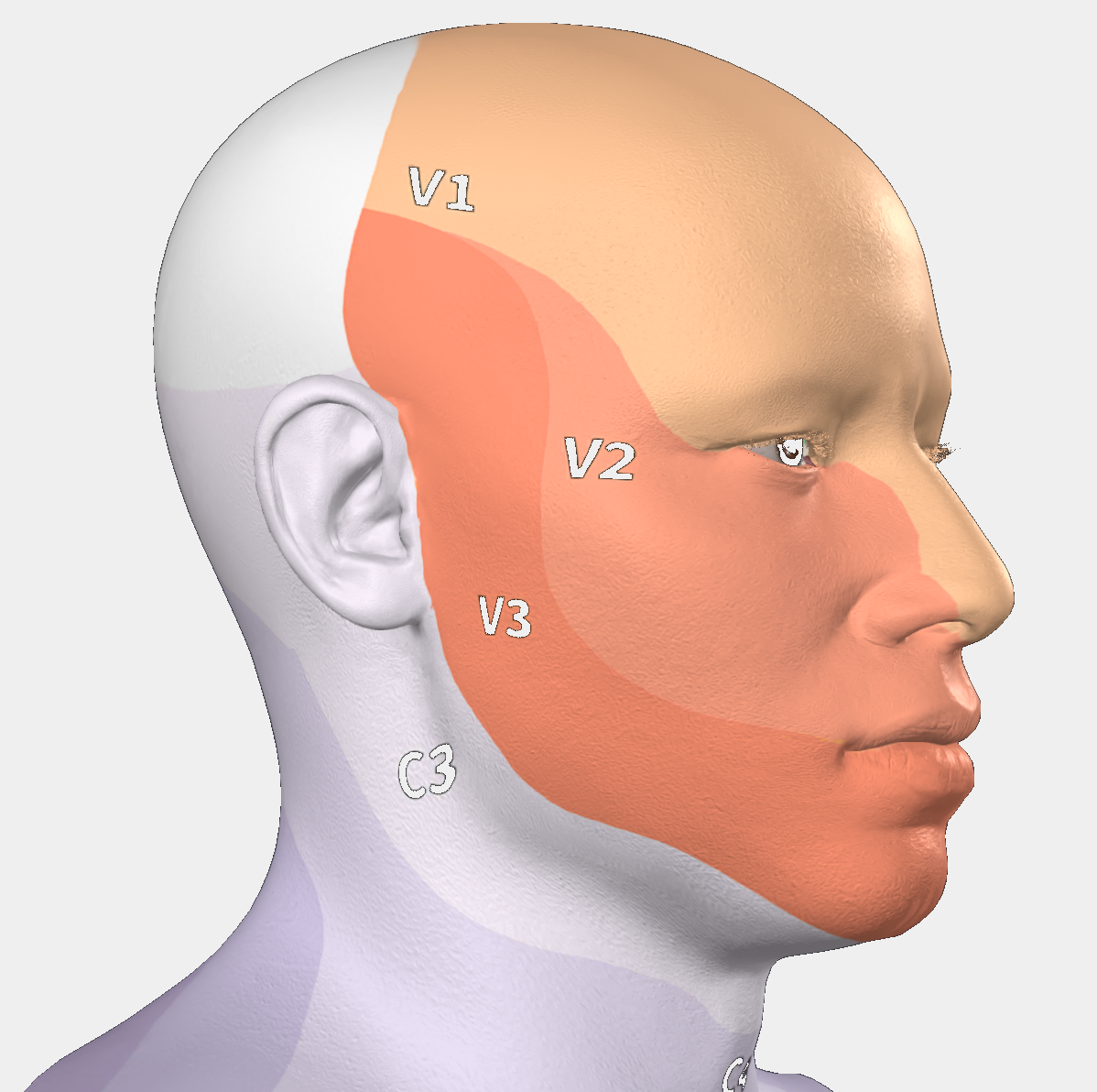What is Trigeminal Neuralgia?
Trigeminal neuralgia, also known as tic douloureux or facial pain, is a severe pain condition resulting from a disorder of the trigeminal nerve (cranial nerve V). This nerve is responsible for sensation in the face, and during neuralgia, pain attacks typically occur in one or more areas of the face.
What symptoms does trigeminal neuralgia cause?
Pain attacks associated with trigeminal neuralgia can be sudden and sharp. They usually occur on one side of the face and last for a short time, typically from a few seconds to a few minutes. Between attacks, the patient is completely symptom-free. The pain often feels similar to an electric shock or a burning sensation in the affected area. Trigger factors for the pain attacks may include touching the face, washing, speaking, chewing, or even feeling the wind. In cases of long-standing trigeminal neuralgia, the clinical presentation may evolve over years, decades, or as a result of previous treatments, often leading to the development of a constant background pain, on top of which the attacks occur.
How is trigeminal neuralgia diagnosed?
The diagnosis of trigeminal neuralgia is typically made by a doctor based on clinical examination and detailed discussion of symptoms. In most cases, the trigger cannot be identified; however, there are cases where trigeminal neuralgia develops on the basis of multiple sclerosis, or irritation of the nerve by a pulsating small artery or even a tumor in the brain. To clarify these, an MRI examination is necessary.
What treatment options are available for trigeminal neuralgia?
Treatment of trigeminal neuralgia can be done in several ways, and the most appropriate therapy is recommended by the doctor based on individual symptoms and the severity of the condition. Treatment options may include:
- Medications: Conventional painkillers and anti-inflammatory drugs and opioid medications are typically ineffective. Recommended medications include anticonvulsants such as (ox)carbamazepine, gabapentin, pregabalin, etc. However many patients have difficulty tolerating the side effects.
- Minimally invasive methods: Trigeminal neuralgia can be successfully and reliably treated with radiofrequency treatment of the Gasser ganglion (the central common nerve trunk of the trigeminal nerves) or balloon catheter compression.
- Surgical intervention: In severe cases where conservative treatment does not provide adequate results and there is an identifiable cause (e.g., an artery irritating the trigeminal nerve), neurosurgical intervention can be applied to reduce the pressure on the nerve.



